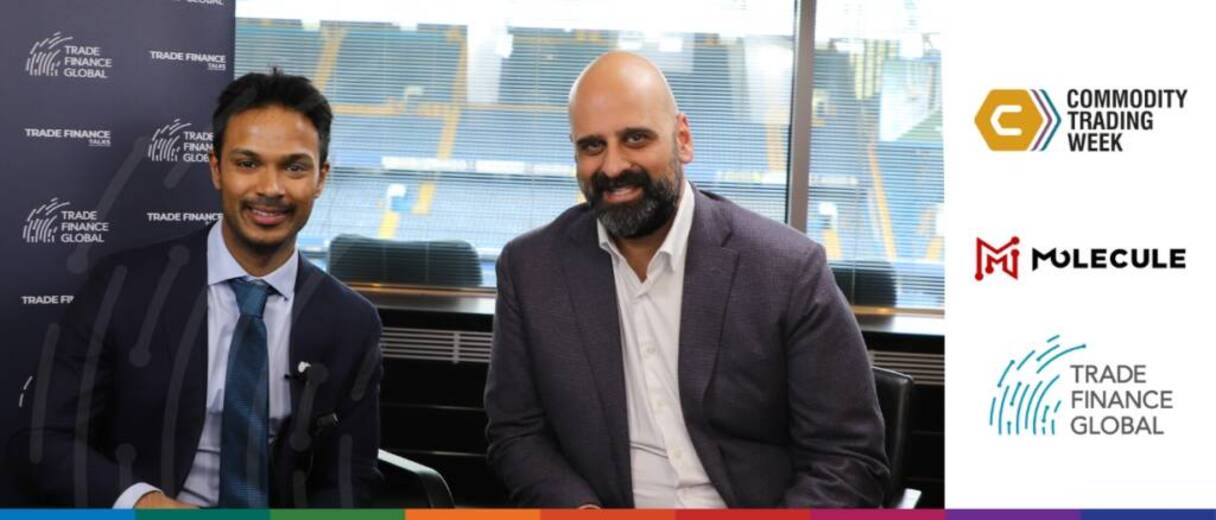Estimated reading time: 3 minutes
At Commodity Trading Week in London, Trade Finance Global (TFG) spoke with Sameer Soleja, the CEO of Molecule, to learn more about how major players in the commodity space are navigating risk and the role of CTRM and ETRM systems.
The humble role of CTRM, ETRM
The terms CTRM (commodity trading and risk management) and ETRM (energy trading and risk management) refer to specialised software systems designed to support companies in managing their trading of commodities and energy, including related risks.
Firms providing CTRM and ETRM solutions – such as Molecule – have been confronted with many significant challenges since the turn of the decade, due to increased market volatility and the dynamic nature of the commodity trading space
Among these challenges is the rapid growth in the different types of instruments being traded in markets.
Soleja said, “We see a lot of very, very complicated instruments starting to be traded, and a lot of folks have systems that are struggling to keep up with those demands.”
New types of tradables create a dynamic need
One example of a new type of instrument being traded is a renewables certificate, which has attributes – such as vintages – that simply have not been common in commodities trading in the past. This is creating a challenge for software providers to model within their platforms.

Another example is the rapid increase in renewable electricity sales. The underlying financing mechanisms – known as ‘Power Purchasing Agreements’ or PPAs – are often multiple decades-long, but are settled on an hourly basis.
This creates a unique situation where a CTRM must deal with a trade with 8,760 legs per year over the course of three decades.
Because of shifting markets and the evolution of commodities trading, CTRMs and ETRMs need to also evolve — providing the ability to model trades with robust precision, while being flexible enough to model new and innovative trades.
Soleja said, “Our customers can be fairly certain that some new wacky thing they’re trading will be able to be supported on our platform.”
CTRM, ETRM, AI, and the need for accuracy
At its core, the role of a CTRM or ETRM is to serve as a system of record for the trading organisation and maintain a high degree of accuracy across all the instruments that the organisation trades.
If it doesn’t model the whole portfolio or doesn’t do so accurately, then it doesn’t provide customers with the transparency that they need.
This dynamic makes the promise of emerging technology like artificial intelligence, particularly interesting.
Soleja said, “If accuracy is the metric we’re after, that’s the thing that AI is really great at, finding needles in haystacks. I think applying that to ETRMs and CTRMs will be a really interesting effort.”
This could ultimately lead to better data accuracy and improved risk management for commodities trading companies. It could also be beneficial to the financial markets as a whole, helping to reduce volatility and make markets more efficient.
Future outlook for commodities trading
Despite the widespread macroeconomic uncertainty, commodities markets have continued to perform strongly.
While the uncertainty and volatility in the markets are expected to continue increasing throughout 2024, particularly given the geopolitical turmoil and the prominence of global elections, commodities markets seem poised to remain strong.
Soleja said, “I think commodities will still be on a tear by the end of the year.”
While the potential risks remain, the commodities markets seem well-positioned to continue performing well and provide investors with opportunities to reap the rewards of their investments in the coming years.





























